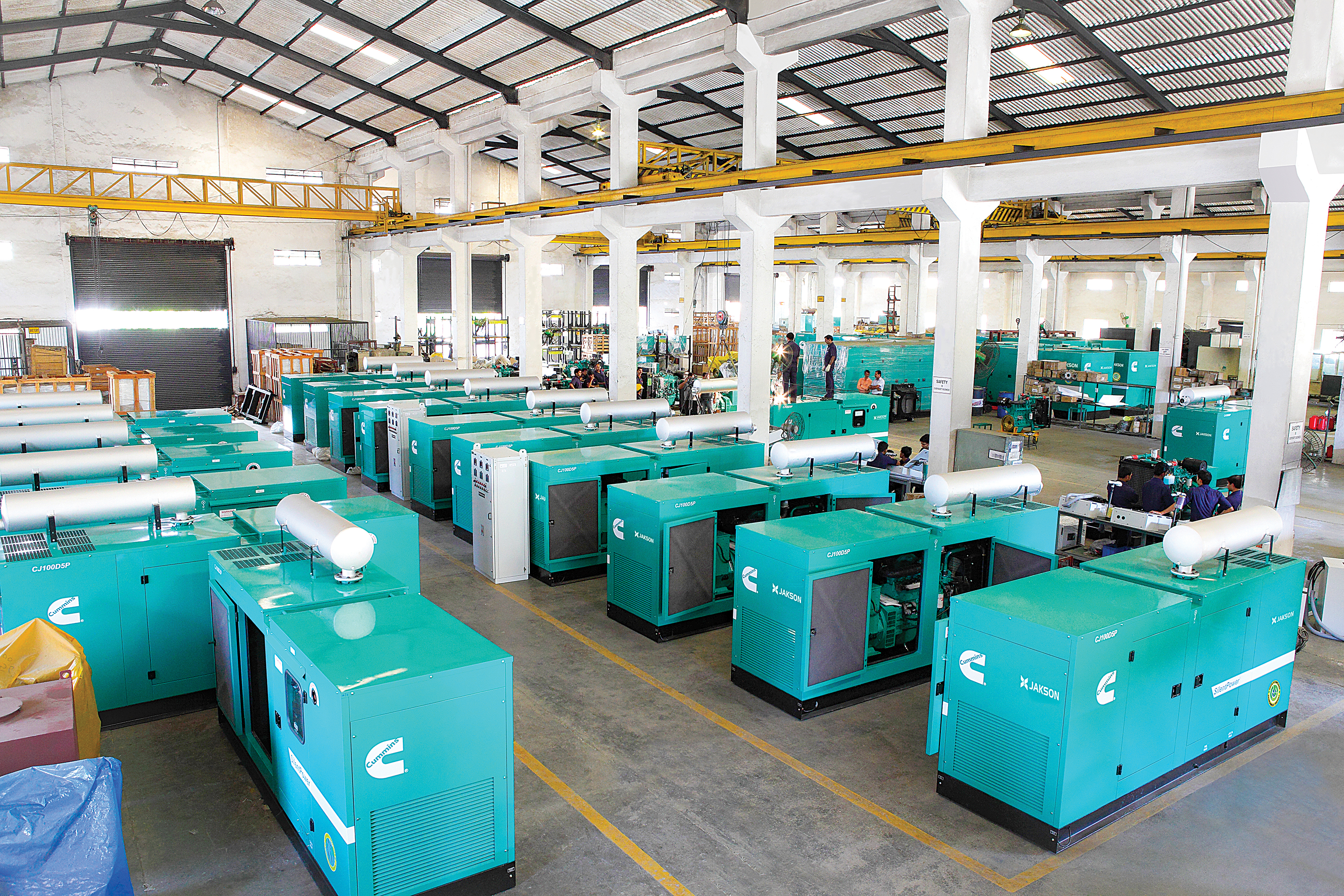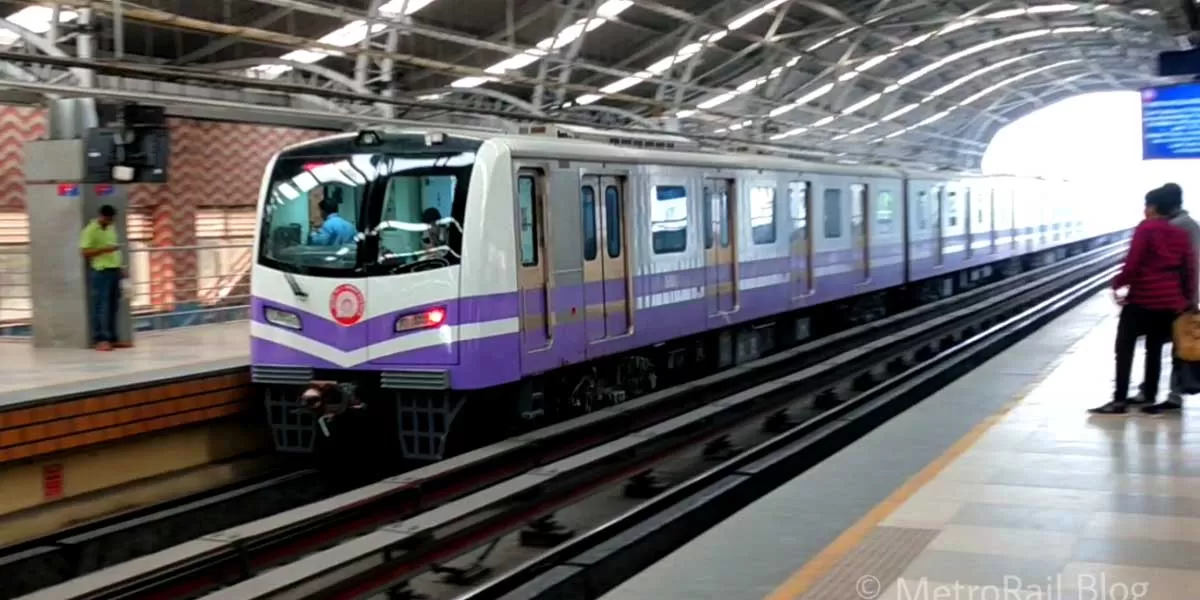The outbreak of COVID-19
has spurred expansion in the healthcare sector and allied industries. One such
critical backup industry is the generator sector, which fared well for this
exposure in a year when the overall genset market dropped by 22 per cent owing to
the pandemic, according to R Rajesh, Head, Power Solutions Business, Ashok Leyland.
“We saw
a surge in demand from hospitals,” he shares.
“While COVID-19
undoubtedly impacted the overall sales of gensets, pharma units and hospitals
and healthcare facilities, particularly COVID-19 hospitals and centres saw
stable demand,” says Gagan Chanana, COO, Distributed Energy, Jakson Group.
“Demand for a reliable backup power source has increased in the
healthcare segment owing to the ongoing pandemic,” notes Sanjeev Nimkar,
Managing Director & CEO, Kirloskar Oil Engines.
However, as Sanjay Jain, Business Head, Mahindra Powerol Business,
Mahindra & Mahindra, points out,
“healthcare contributes very little business compared to other segments.
“During the first surge and the second surge
of COVID-19, we saw some emergency buying by hospitals and other healthcare
facilities,” says Jain. “But these are only accelerated decisions by the
segment, these purchases were supposed to happen during the year.”
Demand beyond healthcare
Actually, hospitality, real estate and
infrastructure are the major sectors where the consumption of gensets is very
high and those are the very segments affected by COVID-19 so the adverse impact
on genset demand has been significant,” adds Jain. “Real estate is such a big
segment that no other segment can compensate for the loss of that business.”
So what has helped the genset industry stay
afloat in this last year?
Beyond
the health and pharma sectors, Nimkar lists infrastructure, automobile
ancillaries, ecommerce and agro-based industries as driving the demand for
gensets, and helping the industry revive to normal levels. Eastern and Northern
India are driving demand, according to Nimkar, followed by the South and West.
“Other segments
contributing to genset sales include infrastructure, particularly government-funded
projects like highways, expressways, airports and defence establishments.; food-processing
units (FMCG, milk); data centres; and IT/ITES companies,” adds Chanana. “In
certain areas, even real estate has generated sporadic demand for gensets.”
Upcoming opportunities
“While real estate is a
part of the overall infrastructure story of the country, other areas such as
infrastructure projects, educational institutes, hospitals and shopping malls
also form a
sizeable opportunity area for JCB gensets,” says Deepak Shetty, CEO and MD,
JCB India. “With infrastructure development projects getting the desired
impetus, opportunities will open up for gensets in construction. Today, project
sites are working round the clock, which requires 24×7 electricity backup. Infrastructure
projects of national importance such as Sagarmala, Bharatmala, 100 new airports
and smart cities will bring significant opportunities.”
Given the budgetary focus on the creation of health infrastructure across the
nation, Shetty also expects opportunities for gensets in healthcare. He is
hopeful of seeing some of this activity in rural India.
Jain is hopeful about a revival after Covid
considering that after the situation normalised last year demand from the real
estate segment increased. In fact, cities like Mumbai and Pune saw a decadal
high which compensated for the losses incurred during the first quarter.
Power sector
One area you would
expect to be doing well but isn’t is the power sector.
“Even before COVID-19,
coal-fired thermal power was already reeling under the onslaught of the
renewable sector and, therefore, greenfield power projects were already on the
decline,” observes Aloke Sarkar, Chief Executive & Whole-Time Director,
L&T–MHI Power Turbine Generators (LMTG). “COVID-19 has added to
the miseries of this sector as it has reduced investments by both the public
and private sectors in any kind of projects.”
Until the situation
turns around, Sarkar observes that renovation and repair jobs are some of the
opportunities available and the government emphasis on renewables has spurred demand
for hydro-generators.
Sarkar identifies
synchronous condensers as an emerging market, driven by solar energy and wind
energy. “This could be a new area to get into, and a source of hope for generator
manufacturers.”
Mining
sector
FY21
began with very low demand for gensets from the mining sector as projects and
orders were deferred owing to market challenges, says Rajesh. However, demand
started to increase after October 2020 when the market started to open up.
The mining sector prefers diesel generator sets
with a better first step-up loading, lower fuel consumption and the capability
to run on continuous duty, explains Rajesh.
Piped gas genset,
anyone?
Piped gas gensets could
have become a major opportunity, but so far they have not been able to generate
major demand in the market, observes Chanana. For this segment to pick up, he
says their high capital cost will have to reduce, their available
range/capacity will have to improve (currently, leading Indian engine
manufacturers aren’t producing gas engines due to stringent emission norms) and
the piped gas supply infrastructure will need to improve.
Indeed, “piped gas
gensets depend on the availability of gas in their area of operation,” notes
Shetty. “While a lot of progress has been made in availability in Delhi-NCR and
other metros and cities, further improvement is possible. As many of these
machines work in far-flung areas, refilling and subsequent operations can pose
a limitation compared to diesel. Thus, there is a need to develop
infrastructure and a complete ecosystem around the availability of gas for
gensets.”
The requirement for gas-based gensets will
increase when the infrastructure to distribute gas is in place, agrees Nimkar.
While he expects this to happen [eventually] in major metros, some issues still
need to be addressed.
“We’re working on challenges such as the
calorific value of gas, individual users’ ability to handle/operate the system
and initial capital cost and space constraints, and hope to provide a universal
solution through our technology wing,” says Nimkar.
Rajesh
acknowledges the impact of basic infrastructure and the pressure available at
the point of delivery on the uptake of piped gas gensets. While the sale
volumes of Ashok Leyland's gas gensets, 40 kVA, 62.5 kVA and 125 kVA are not
significant as on date, he expects significant total industry volume growth in
this product range.
Delhi diesel ban
Rising air pollution in
the Delhi-NCR region led to a ban on diesel generators in October 2020, a
measure that stayed in place through winter. How did this ban impact vendors?
“We’ve been seeing a
drop of about 30-40 per cent in demand for diesel gensets in the NCR during the
six months of the genset ban imposed by the National
Green Tribunal, during the past three years, says Chanana.
The ban on diesel gensets and subsequent construction activities in NCR
completely disrupted demand after the enactment of the new law, says Jain.
“However, many businesses like Mahindra’s have worked to find innovative
solutions to the challenge.”
One such offering from Mahindra’s is gas gensets, which debuted in 2018,
and have since supplied emergency backup to segments like manufacturing, infra,
textile, food chain, etc.”
These gas gensets are purely natural gas based, capable of running on
PNG and CNG supply, and produce no smoke/smog and have zero particulate matter
in their exhaust, a big thing because this is a major threat in NCR, explains
Jain. “They cost 40 per cent less to operate than diesel gensets of the same
capacity, and eliminate the need to store fuel, hence the fear of spillage or
pilferage.”
“We
have developed a future-ready solution to address needs in the Delhi/NCR
market, which has helped us retain our volumes in this territory,” shares
Nimkar. Incidentally, Kirloskar Oil Engines was the first company to release a
complete range complying with CPCB 2 norms; it is committed to deliver greener
solutions and its portfolio spans gensets running on biodiesel, gas as well as
CNG.
As a
result of the ban, Rajesh notes, “most customers either converted their
existing diesel genset to gas, using a gas kit, or replaced the old sets with
new gas-based versions of the standard diesel generator sets. As Ashok Leyland
also has gas-based gensets as part of our range, we have been able to retain
most of our customers.”
A positive note to end
on!
What gensets are
hospitals demanding?
During COVID-19, we’ve
seen how hospitals facing emergencies try to scale up their infrastructure in a
matter of a few days. This sense of urgency applies to all procurements
enabling emergency care, including generators.
“Healthcare projects are fast-track projects;
hospitals expect quick delivery, which we are able to offer with our commitment
of seven days’ assured delivery,” says Sanjeev Nimkar, Managing Director
& CEO, Kirloskar Oil Engines.
Among the factors impacting the rating of the
genset demanded by hospitals are the numbers of beds, HVAC capacity, diagnostic
lab and other services offered, he observes.
Hospital
genset requirements are based on many factors, including equipment, number of
beds and other criteria, explains R Rajesh, Head, Power Solutions Business, Ashok Leyland. “In the current scenario, in
larger hospitals and/or medical colleges with oxygen plants with 100-plus beds,
25 ICU beds, the requirement is for 250 kVA gensets, while in smaller district
or block-level hospitals where oxygen is sourced externally, the requirement is
for 82.5 kVA gensets.”
Factors like medical equipment, the load of air-conditioners and other
regular equipment defines the size of the genset for hospitals, points out Sanjay
Jain, Business Head, Mahindra Powerol Business, Mahindra & Mahindra.
“However, the requirement can vary between 30 kVA and 500 kVA depending on the
size and specialisation of the hospital.”
“In general, hospital
and healthcare facilities demand generators with capacity ranging between 250 kVA
and 1,500 kVA depending on the medical equipment installed in their ICUs, labs,
diagnostic centres and so forth, adds Gagan Chanana, COO, Distributed
Energy, Jakson Group.
Tech enhancements in
gensets
Technology
enhancements in the KOEL range by Kirloskar include linear fuel consumption
through an O2E feature, thinking gensets through a range of AMF (auto mains
failure) solutions, information access through QR codes and an IoT [Internet of
Things] offering, Kirloskar Remote Monitoring, which provides users a quick-look
dashboard to track genset health, a new business intelligence landing page
providing insights into the genset health and performance, graphic reports of
critical genset parameters for detailed analysis, and a bird’s eye view of
gensets serving clients. All these features are also available through the KOEL
iGreen mobile application.
The Jakson Group, the
first leading manufacturer of silent gensets in India, is strong on product
development. “We work closely with Cummins on the development of new products
and technologies. Very soon, we will collaborate with them for a new range of
products meeting the next level of emission norms (CPCB IV+) likely to be
enforced for diesel generators by mid-CY 2022,” shares Gagan Chanana, COO,
Distributed Energy, Jakson Group. “Additionally, we are implementing
regular upgrades and changes to power electronics on our existing product
lines.”
One of
the most standout features of Ashok Leyland’s highly efficient and cost-competitive
diesel generator sets is the fact that “the entire product range spanning 10 kVA
to 160 kVA uses common consumables,” as per R Rajesh, Head, Power Solutions Business, Ashok Leyland. “This commonality
of parts is exclusive to Ashok Leyland products and is designed to help
customers as well as service partners to maintain good control over their parts
inventory. Also, to meet varied customer needs, Ashok Leyland offers customised
solutions on IOT, AMC and EWP.”
JCBs diesel generators (63 to 200 kVa) are connected in real time through JCB
Livelink, advanced telematics technology that ensures that users are always in
control of their fleet. Other salient features include a compact design that
houses the silencer inside the canopy and a focus on aesthetics, complete body
earthing, with high block load capacity and the ability of operating in extreme
weather conditions.
Gensets by LMTG stand
out for their low vibration level resulting in quiet operation throughout their
service life. To restrict copper corrosion and avoid requirement of dosing to
maintain alkaline pH, LMTG uses neutral pH demineralised water with restricted
oxygen for cooling of armature windings for its longer life. Further, these
generators have a double-flow seal oil system with additional sealing of
hydrogen inside the generator to ensure increased purity of hydrogen, thereby
resulting in higher efficiency.
- By Charu Bahri


















